Russian Virtual Computer Museum. → Hall of Fame → Shteinberg Vitaly Iosifovich
Shteinberg Vitaly Iosifovich
Alexander Nitusov
*Although it would be “more English” to write the name as “Steinberg” (read /Sh t e i n b e r g/), the given spelling is traditional in Russia. (translator’s note).
V.I. Shteinberg is the chief designer of open joint stock company „OJSC SRI „Argon“ [1]. He has scientific degree „Candidate of Technical Sciences“ and is a senior scientific collaborator at the scientific research institute ARGON.
Since 1964 he has been designing onboard, and other, specialized computers. He was the author of computer with the first integrated circuits and multi-crystal BIS-es (large-scale integrated circuits) as the basic components. The USSR first mobile computer complex „Beta-3M“, which was mounted in a vehicle, and was operating during its motion, was officially approved and adopted, as a part of an automatic control system, by armies of the USSR and of some Warsaw Pact countries. On-board computers „ARGON“ of his design are widely used in marine, space, aircraft and land-based objects.
The Beginning
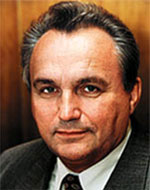
Vitaly Iosifovich Shteinberg
He was born on the 24th of December 1941 in town of Shumerlia, in Chuvash Autonomous Republic (USSR), where his parents were evacuated from Moscow in the beginning of the Great Patriotic War.
His father - Iosif Samoilovich Shteinberg (1911-1982), was an engineer-scientist expert in cold processing of metals. Most of his life he worked for the defense industry. During the war the father, as a member of special management team, was engaged in weapons production organization at the military plants evacuated from the western regions. That work was crucially necessary for the war needs. Those plants were dislocated mainly in the Middle-Volga region: in towns of Saratov, Kuibyshev, Molotov (now Perm).
After the war the father headed scientific-research laboratory of metal-strengthening components for artillery systems and light weapons. However, in 1953 he was dispatched as specialist (and member of communist party) to agricultural technical station in the town of Lebedian in Lipetsk region. That was the state industrialization program for agricultural sphere. After several years at the station he received new appointment as vice chief technologist in charge of new machinery, at the Lipetsk tractor plant (one of the biggest in the USSR). The last years before retirement he spent at the town of Kaliningrad (Korolev) -in Moscow area- where he headed a laboratory at the design bureau for chemical engineering.
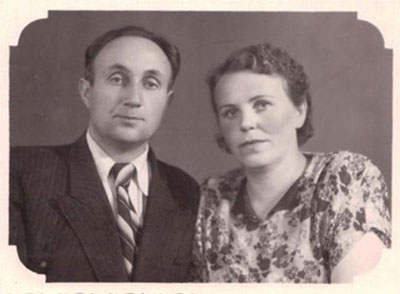
The parents
Vitaly's mother – Serafima Vasilievna Shteinberg (born Katasonova) (1912-1992) was a professional school teacher of higher qualification. In the 1930s she was teaching at a provincial school in town Lebedian, and later in Moscow. Just before the war she was editorial secretary at very popular magazine "Technology for the Youth" [2]. During the war, and years after, she was taking care of her family but when they moved to Kaliningrad she worked, together with her husband, as an inspector at the design bureau.
The first time the family moved to Kaliningrad in 1943, when they returned from the evacuation. Then they received a room in a multifamily unit. Actually, that was not bad at all, considering the general war-time hardships.
The father was always very busy; he often went to official trips. Vitaly and his elder sister had most of the daily contacts with their mother -professional teacher. She always wanted her children to be conscientious students and workers, responsible, respectful and industrious persons.
The elder sister Natalia (born 1934) graduated from a Kaliningrad secondary school with a „Gold Medal“ (with honours). Then she entered the Second Moscow Medical Institute and after graduation moved with her family -husband and son- to town of Dubna on upper Volga – one of the most famous European scientific centres for nuclear physics researches (permanent partner of the Swiss CERN). For all her professional life, until retirement, Natalia has worked as a doctor, at special clinic of Dubna Joint Institute of Nuclear Researches.
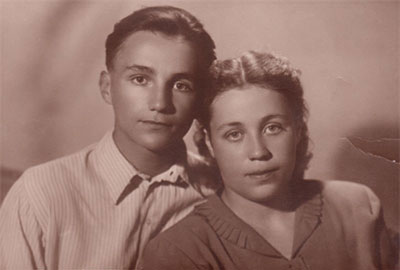
Vitaly and Natasha
The first six years Vitaly studied at the Kaliningrad secondary school for boys. Those times boys and girls studied separately and there were no other schools. Then education system was reformed and all classes became of mixed type - boys and girls studied together. That was an impressive event for those years.
In his free time Vitaly visited club of photo art and also was a member of a children chorus at the central city club. He and his class-mates, together with a school teacher, often visited Moscow theaters, museums and just went sightseeing.
Summer vacations he always spent at some pioneer camp, in a countryside not far from Moscow. That was very exciting: short touristic travels, groups for various activities (photo, chess, etc.) numerous sport competitions and, what was also important, volunteer work for agricultural enterprises (state collective farms) of the neighboring area. The latter helped to form and develop social skills, such as mutual help, unselfishness, etc.
Unfortunately, he had to leave that school because the family moved to the Lipetsk area (to Lebedian). There he studied at the eighth form and then the father received appointment in town of Lipetsk, they moved again and it was there where Vitaly studied at the ninth and tenth forms (Lipetsk city school №10). He was always very student and eventually graduated from the school with honours – with a „Silver Medal“. As he was a toll boy (187 cm high) Vitaly played at basketball team of the Lipetsk tractor plant sport club.
University
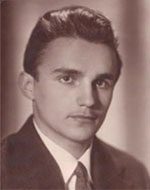
Vitaly Shteinberg – 20 years old student of MFEI
In 1958, after finishing school, Vitaly returned to Moscow. Several months he worked there as a turner, at the experimental plant of A.N. Tupolev Experimental Design Bureau (aircraft industry), and in 1959 entered the Moscow Forest Engineering Institute - MFEI (now Russian State Forest University - RSFU). There he studied at principally new faculty – Electronics and Computing Engineering, which had been established just before. Vitaly chose specialization „Mathematical and Computing Instruments and Devices“.
The faculty was established upon the initiative of Sergey P. Korolev – chief designer of the Soviet rockets and space ships. Main purpose of the faculty consisted in preparing of scientific and engineering specialists for defense industry. At the institute Vitaly Shteinberg was elected as the secretary of the faculty Komsomol (young communists) organization; in summer he headed student construction brigades. As he was a tall and strong young man he was always interested in sport - he actively played for the institute's handball team.
Same as most of the Soviet universities and institutes MFEI had military art division; Vitaly received one more qualification (military) „Air Navigator“, reserve pilot officer – lieutenant. As student he had practical training at the regiment of transporting airplanes AN-12. Many years after graduation when Vitaly began work with specialized computers his military qualification proved to be of great use. He successfully graduated in 1964, with speciality „Electrical Engineer“.
The first appointment
After graduation Vitaly Shteinberg was appointed as an engineer at the Scientific Research Institute for Electronic (Mathematical) Machines (SRIEM), which was subjected to the USSR Ministry of Radio Industry. The institute had an impressive history because initially that was the famous Special Design Bureau 245, founded in 1948 upon a directive of the USSR Council of Ministers. Later it was transformed and developed. That was the place where the first soviet serial vacuum tube based digital computers STRELA were. Computers STRELA were used by the Space Flights Control Centre. That was also the birthplace of very popular computer of the first generation - M-20, semiconductor “high speed” computers M-220 and M-222 (ЭВМ М-220 and М-222), some unique computing complexes and unified computers for anti-aircraft defense systems, such as Radon, Klen, etc.
Although Vitaly was only beginning his engineering career he was given position at the department Nr, 9 – one of the institute's leading subdivisions. Adolf Fedorovich Kondrashev was the head of the department and the chief designer Vladimir Moiseevich Karasik headed the laboratory in which Vitaly Shteinberg had had his practical pre-diploma training and also made his diploma project.
The both scientists - formerly graduates of the Moscow Power Engineering Institute, were among the first soviet leading scientists – designers of the first computers. Before them, department Nr.9 was headed by Mikhail Kirillovich Sulim. Sulim's pre-assessor was Bashir Iskanderovich Rameev. They were Soviet computer pioneers, their contribution to forming and development of computer science and engineering was outstanding.
Vitaly was really a lucky one, as his chief V.M. Karasik was not only a prominent scientist but also an excellent pedagog - he played great role in Vitaly's scientific growth. Thank to Karasik's attention and “scientific care” Vitaly eventually became not only an engineer – designer of computers but also an excellent scientist. Karasik officially recommended Vitaly for post-graduate study (doctorate) at special department of their institute, and himself became scientific supervisor of Vitaly's dissertation. When Vitaly received his degree, prof. Karasik promoted him to the position of deputy chief of thematic scientific department. Later Vitaly Shteinberg was promoted as deputy chief of the special department of on-board computers, that time headed by A.F. Kondrashev.
Intensive work of the institute (SRIEM) became the precious source of new knowledge for the “yesterday graduate”. Advanced projects were exciting, although, in reality that could by no means be called 'easy life'. Besides the working problems and tasks there were numerous “small daily things”. For example, the way from home to the institute unexpectedly turned to be an ordeal.
Those years administration of the city of Moscow introduced numerous regulations with general purpose to optimize its public traffic load. All organizations, institutes, universities, factories, etc. began their day according to special schedules. Therefore, their institute was offered a choice: to begin its work at 10.00 a.m. or at 7.30 a.m. Most of the people wanted to start at 7.30 (quite logically) so that to finish their working day earlier.
One does not need much fantasy to imagine the morning of Vitaly. He lived outside the town and daily had to combine two local trains. At the station where he changed them he also made “cross country races” (across the railways in prohibited dangerous section) to save his time. By the way, every traffic accident could make him to be late to his work, what, according to the rules of military (defense industry) institute, could be considered almost as a criminal act. Luckily, at the age of 25 such way of life doesn't seem to be a tragedy.
On-board computers
Emerging of the first electronic computers was soon followed by forming of the “On-board computer” conception. It usually means the computer which is mounted on any mobile object (ship, aircraft, rocket, space station, special transporting vehicle, etc.) and is functioning during its motion.
With miniaturization and introduction of basic electronic components – transistors, diodes, integrated circuits, microcircuits, microprocessors (“chips”), etc. sizes of on-board computers get significantly smaller, and reliability of their work sharply increases. Their variety, affectivity and “popularity” also grow accordingly.
From 1964 the institute is the leading national scientific and engineering enterprise for on-board digital computers (OBDC). Since then about 40 types of on-board computers and computing complexes have been developed and successfully implemented in rocket, space, aircrafts and many mobile land-based objects. Many of them were produced in large quantities and are still in operation. The enterprise accumulated rich experience in the field of producing highly reliable small-size computing means, intended for operation in “heavy duty” conditions.
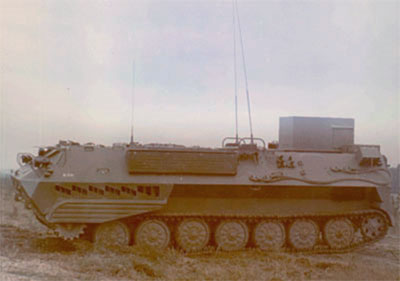
BETA-3m – computer for “heavy duty operation”
CRCECE
In 1968 SRIEM was integrated into newly founded Scientific Research Centre for Electronic Computer Engineering (SRCECE). It subsequently became the head organization of Scientific research and Production Association (SPA) “Persey” (Perseus).
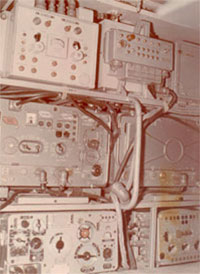
Radio-master's section of Electronic Computing Complex (ECC) Beta-3m
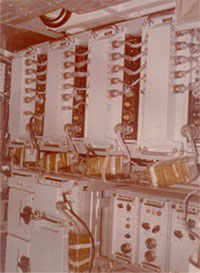
Rear section of Electronic Computing Complex (ECC) Beta-3m

On-board Digital Computer (OBDC) А-50
Vitaly Iosifovich Shteinberg himself participated in development of the first Soviet DOCs based on monolithic integrated circuits and multi-crystal Big Integrated Circuits (BIC). He is one of the authors of the logical project of multi-crystal BIC series 216, which is the basic component for the on-board digital computing complex with computer A-30. They were also implemented in multicomputer system of aircraft radar monitoring and aiming complex, in antiaircraft defense mobile automatic control system, in systems of aircraft flights control in the navy aircraft carriers actions area, in mobile systems of flying objects remote control, in rocket assault early warning automatic control system and in many other installations.
Several advanced automatic design and quality control systems were used during development of on-board digital computers (OBDC). Scientific methods were widely implemented for technical diagnostics of computer blocks and units. That minimized or even almost completely excluded necessity of complex testing and regulation during their manufacturing.
Designers of OBDC implemented the most modern components of that time and new materials, part of which was specially created for those projects upon the institute's request. Advanced engineering and technological solutions embedded in those projects guaranteed high quality and reliability of the basic models and provided possibilities for their multi-service implementation in weapons. The experts had also studied in detail all available information sources of foreign experience as well as experience of the Soviet enterprises of the same profile.
During his working career V.I. Shteinberg held positions of the department head's deputy, of the division chief's deputy, head of the on-board computers department, vice chief designer on special computers at the SRCECE and SPA “Persey”, and of vice chief designer of digital on-board computers of “Argon” complex. As a scientist and engineer he headed development of several generations of basic unified on-board computers and complexes for rocket and space-, aircraft-, mobile- and fixed- objects.
He was also the chief designer of mobile electronic computing complexes BETA-2 and BETA-3m and of basic inter-type digital on-board computers A-30, A-40, A-50.
Mobile computer BETA-2 was in use at the first stage of the Governmental procedure for the front troops automatic management system testing. Computer BETA-3m was the first Soviet mobile computer complex, which was operating during its carrier's motion. It was in regular use as a part of an automatic control system both in the Soviet Army and in armies of some other Warsaw Treaty countries. Computers A-30, A-40, A-50 were a pioneer development project in the field of on-board computers compatible with universal (common) “ES Computers” series on the software level.
Subsequently computers of that class became the basic ones for tens of systems and complexes in aircraft, mobile and naval kinds of weapons.
V.I. Shteinberg headed organization of on-board computers serial production, for complex “Argon” (Серия «Аргон»). Nine plants subjected to the USSR Ministry of Radio Industry were engaged in that project. As Shteinberg realized importance of their efficient mass-production he initiated extension of the range of producing enterprises by founding new affiliates in Kishinev (now rep. Moldavia) and in Vladivostok (Far East), which were doing a part of the common work.
He also often visited Lithuanian SPA “Venta” in Vilnius, and manufacturing enterprise “Nuklon” in town of Siauliai, where the “series 216” was designed and produced. There he was supervising solutions on maintaining proper quality and reliability levels of the series in concrete conditions of the manufacturing plant.
Number of his solutions and inventions regarding the architecture and circuitry of computer A-30 was awarded patents (USSR “Author's Certificates”).
A-30 was the first on-board computer ever made with the circuitry composed of cells (standard replaceable components), which were assembled on multilayer printed circuit boards manufactured upon straight through metallization technology. Each functional cell had detachable contact joints; assembly between the cells was performed with wire wrap technique.
Adopted basic solutions on the computer design demonstrated advanced technological performance of production process. In conditions of serial industrial manufacturing those solutions provided producing of necessary amounts of computers with acceptable labour intensity.
V.I. Shteinberg also made significant contribution to activity of Interdepartmental Coordination Council (ICC) for on-board computers development.
ICC for OBDC
ICC for OBDC was established according to the governmental decision on the military OBDC unification. By that time already a significant number of scientific organizations, from various ministries of the USSR (ministry of shipbuilding, - of aircraft-building, - of radio industry, etc.) were involved in their development.
Cooperation of the OBDC chief designers from all concerned ministries which had relations with defense industry, was organized within the framework of the ICC. That cooperation resulted in working out the State Programs for research, design and development of unified OBDC families, unified peripheral equipment for them, development of electronic components and other peripherals.
At that period V.I. Shteinberg occupied vice chief designer's position at development of OBDC for complex system “Argon”. He took part in working out the state development program of unified OBDC families (FB Computers) for perspective systems of control and management, which were based on unified approaches to architecture, software, unified components, etc. Interdepartmental/multi-branch program “FB Computers” included 16 basic models intended for perspective and progressive control systems. In 1986 its development was successfully completed and, after having been approved by special governmental control commission, the governmental directive on its practical realization was issued.
In 1991 Vitaly Iosifovich in parallel with his main work, became the director executive of Association of Customers and Consumers of the Unified Electronic Equipment – Foundation “UNIET” (or, in short, Association “Foundation UNIET”). This association was formed by 20 leading enterprises – producers of radio-electronic equipment (REE). Main purpose of their cooperation (association) consisted in forming common unified policy in the field of development and production of wide selection of electronic components for defense industry.
He also became the deputy of the Association Board Chairman. Association “Foundation UNIET” performs scientific researches and experimental design works on the subject of implementation problems of electronic components (EC). The association also conducts regular scientific and engineering seminars and meetings on various problems, including the problem of replacing imported components with national production. Association regularly releases reference materials on new EC for designers of REE and takes part in working out new state programs on EC development. Number of enterprises - the Association members, constantly increases and nowadays (2016) it already reaches 100.
“Argon”
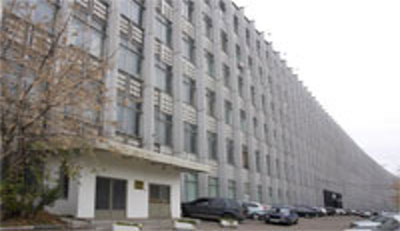
Scientific Research Institute “Argon”
In 1985 new scientific research institute “Argon” was founded on basis of complex department of OBDC, separated from the SRIDEC (НИЦЭВТ). “Argon” also heads the work with the institute's affiliates. From 1986 till September 2000 V.I. Shteinberg was the director's first deputy on scientific work – also the chief engineer of the Scientific Research Institute “Argon” (НИИ «Аргон»). From October 2000 till February 2006 he was the institute's director and the chief designer of the OBDC for complex system “Argon”. In February 2006 V.I. Shteinberg was appointed as the chief designer of the scientific research institute “Argon”.
In the 1990s, general crisis of the national economy, caused by dissolving of the USSR, became a heavy ordeal for the institute's personnel. Within those years number of the institute's collaborators sank several times; its affiliates were practically dissolved. Shteinberg's main concern consisted in preserving, or rather saving, the scientific core of the institute's team, as well as the institute's scientific potential which was created and accumulated during many years of intensive work.
From the mid-1990s numerous scientific researches and experimental design works were performed under his guidance. These projects were mainly concentrated on development of new generation of on-board computers for so-called 'special-purpose objects'. He organized production of OBDC compatible on software level with the personal computers IBM PC. His multi-machine multi-processor multi-functional on-board computing complex EA-2170 became the basic machine for new generation of aerial command posts and number of other aircraft and mobile objects.
Principles of openness, universality and modularity were embedded in the architecture of the complex. That enabled design of 10 new modifications of on-board computing devices built on the same component basis, with unified technology.
From 2004 the series of on-board computers with new architecture – EA-2171 is developed at the institute. In 2007 institute began development of industrial technology for producing OBDC. The technology is based on closed cycle of automatic design and manufacturing. That made possible to save the time of new models development and to maintain high quality of produced installations – EA-2180 and EA-2181.
In 2014 - 2015 V.I. Shteinberg also headed scientific-research program on forecasting and development of special-purpose computer engineering for the period till 2025-2045. This program resulted in program of the most necessary and urgent works on creation new on-board computers for perspective advanced defense objects and systems.
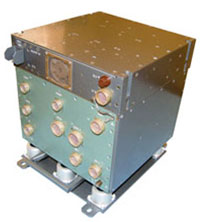
OBDC ЕА-2170
In these (recent) years the institute completed long-time project of on-board computers of new generation for rockets and space objects, among them for the Russian modules of the International Space Station and telecommunication satellites of “Yamal” series. Number of built-in computer complexes of new generation for aerial and mobile communication terminals were produced and put in mass production.
Experimental works on replacing old-fashioned OBDC with the most modern ones were performed in some modernized arms systems. Development of new technical systems with usage of technologies “systems-on-crystal” has begun.
From the end of the 1980s Russian scientific and engineering spheres were catastrophically loosing specialists, and the “new trends” of the 1990s completed re-orientation of the majority of young scientists and engineers towards “new values”. Popularity of scientific work was drastically sinking, and, above all, was often discredited; if deliberately or just because of insensate folly – difficult to understand. Nevertheless, urgent measures were necessary, and first of all maintaining proper level of the young specialists education and professional training. That was clear to everybody.
Teacher
In 1996 – 2015 V.I. Shteinberg headed affiliate of the chair “Computing Systems and Networks” which was a part of the Moscow State Institute of Electronics and Mathematics (technical university) located on the institute “Argon” premises and integrated into its structure. He was elected as its professor and also appointed as the chairman of the State Attestation Commission. Courses of lectures “Networks of Workstations”, “Memory Organization in High-Performance Computing Systems (HPCS)”, “Organization and Design in HPCS”, “Architecture of HPCS” and others were introduced into curriculum of the 4th and 5th university years under his guidance. Due to his efforts many of the students, who studied at the “Argon” affiliate, stayed there after graduation and received positions at different departments of the institute.
V.I. Shteinberg himself authored more than 70 scientific publications, inventions, methodical guidances and other materials. He has degree “Candidate of Technical Sciences”, he was awarded the title “Senior Scientific Collaborator” (of the institute) and was elected as a corresponding member of the International Academy of Informatisation.
Contribution of V.I. Shteinberg to creation of on-board computers has been awarded with the USSR orders: “Sign of Honour” and “Red Banner of Labour”, with four state medals, with the Government of the Russia Federation Certificate of Honour, S.P. Korolev [3] jubilee medal, medal and Premium of the USSR Minister of Radio Industry P.S. Pleshakov, special badge “Honourable Radio-master” (of the Russian Federation), he also bears honourable title “Merited Engineer of the Russian Federation”.
Family
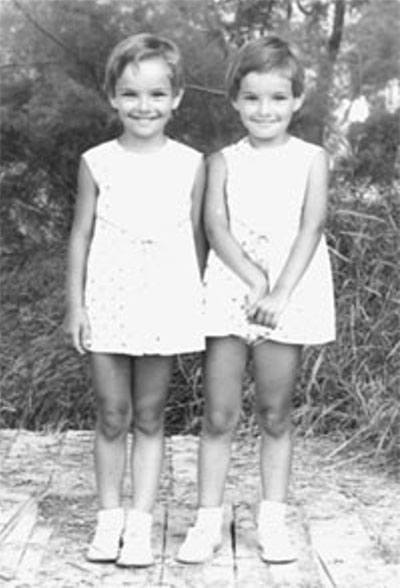
Despite being chronically overloaded with work Vitaly Shteinberg also manages to find some time for his family. As early as in 1965 his twin daughters were born.
The girls have grown up; they successfully graduated from the Moscow Institute of Radio, Electronics and Automatics, with speciality “Computer Engineering”. Both of them already have their own families. Vitaly Shteinberg has got not only grandchildren but in the year 2014 the first great-grandson was born. Some scarce free time he spends with work on his car, house and garden outside Moscow or working with electrical tools on wood or metals. V.I. Shteinberg is also a great amateur of Russian and foreign classical literature, Russian romances and folk songs.
Notes.
1. OJSC-SRI „Argon“: Open Joint Stock Company - „Scientific Research Institute „Argon”.
2. Tekhnika Molodezhi – a Soviet, and Russian popular science magazine which has been published monthly since 1933.
3. S.P. Korolev – the USSR first inventor and designer of space-ships, satellites, etc.



